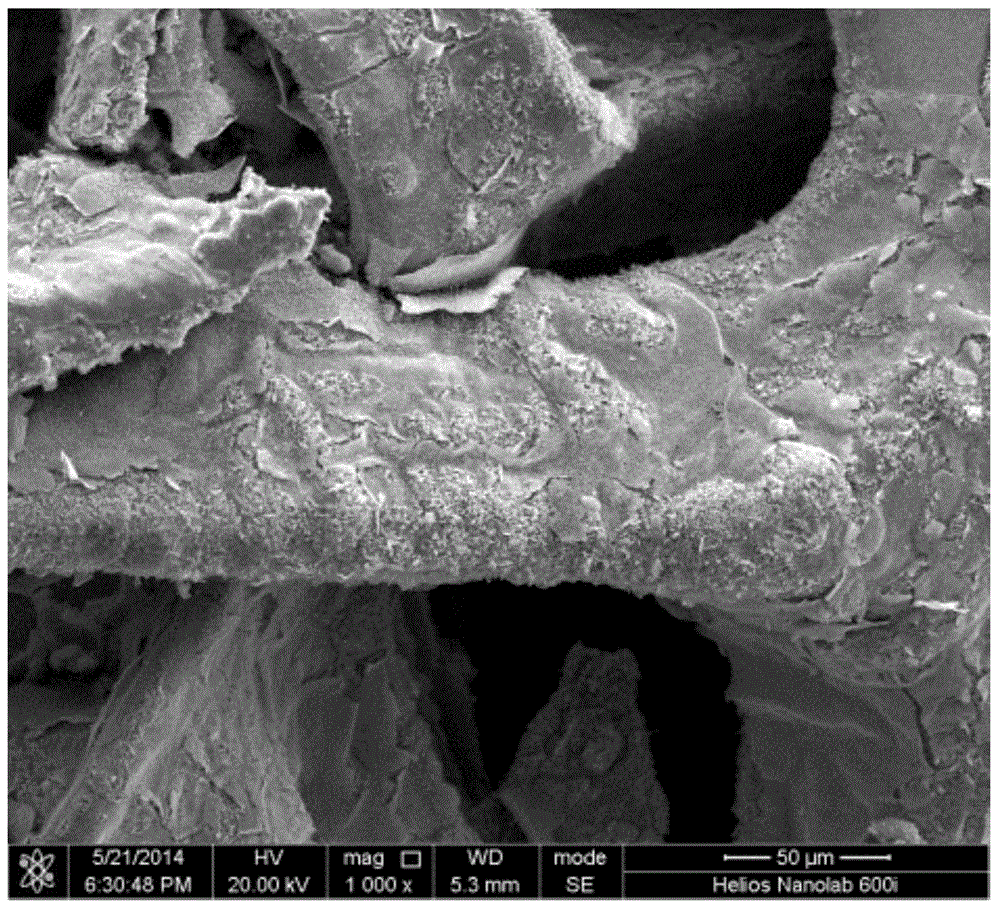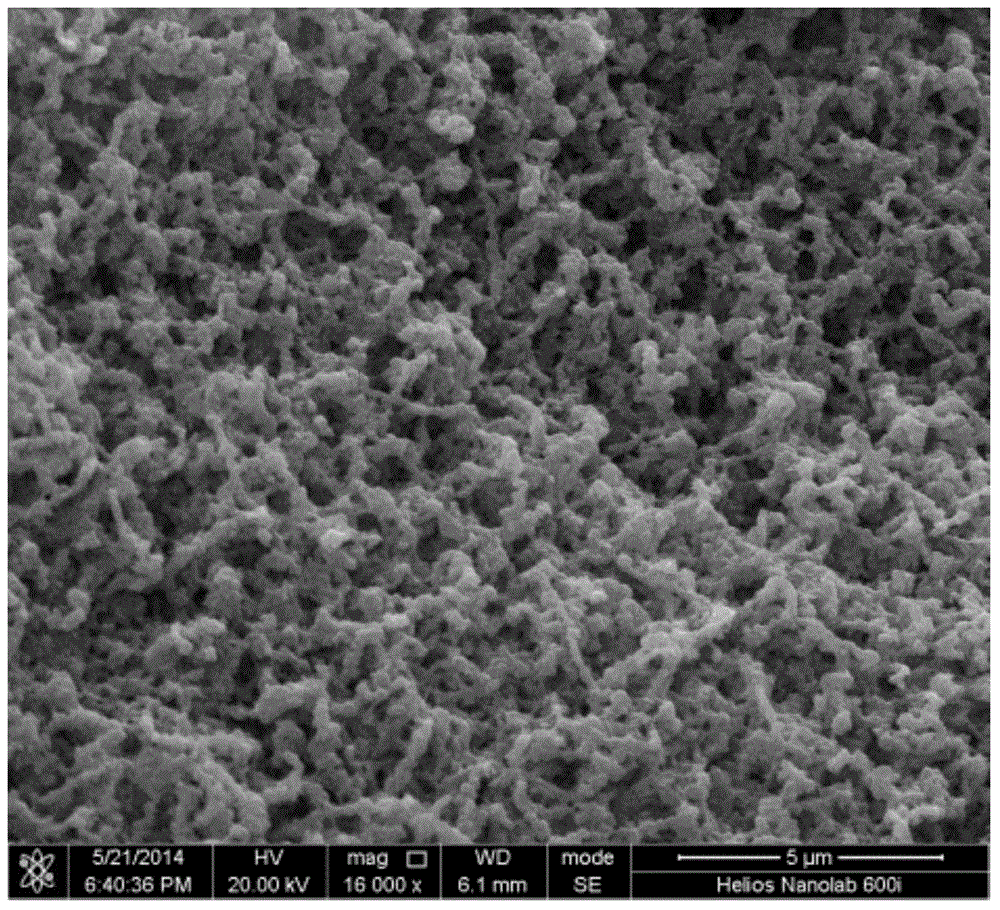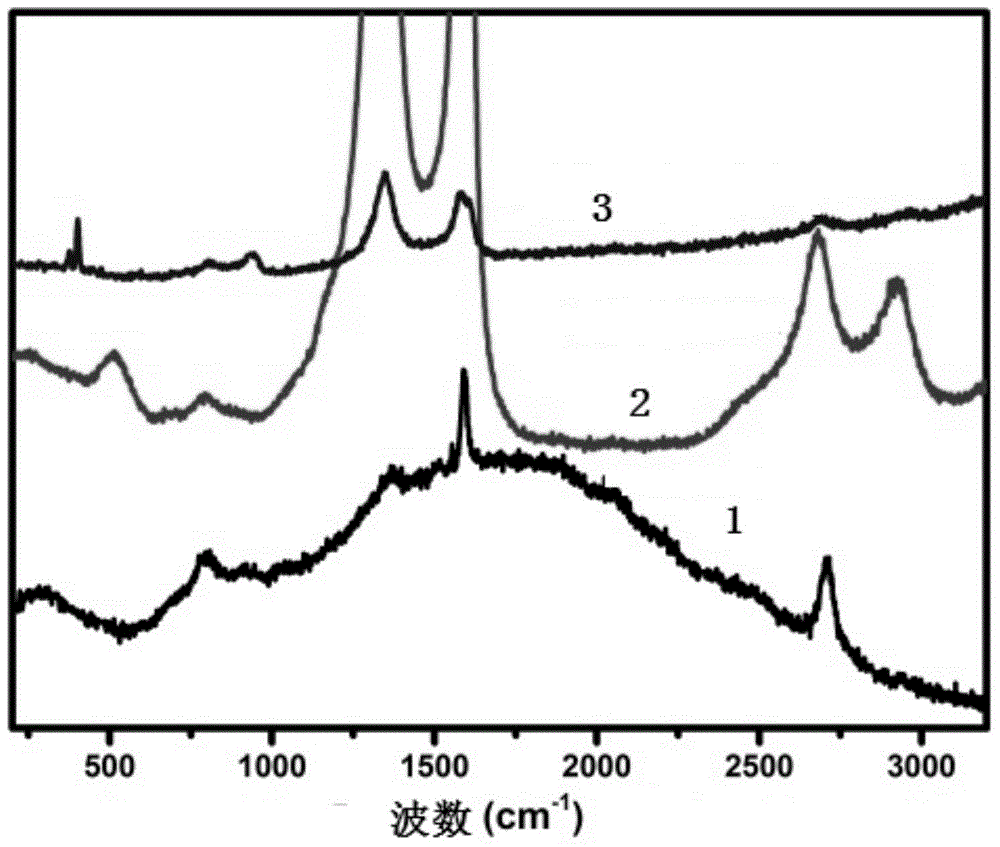Three-dimensional macroporous graphene, carbon nano tube and molybdenum disulfide composite material, and preparation method and application of composite material
A technology of three-dimensional macropores and carbon nanotubes, which is applied to electrical components, battery electrodes, circuits, etc., can solve the problems of poor stability and low first-time cycle efficiency, and achieve good stability, high lattice integrity, and ease of expansion. Effect
- Summary
- Abstract
- Description
- Claims
- Application Information
AI Technical Summary
Problems solved by technology
Method used
Image
Examples
specific Embodiment approach 1
[0035] Specific embodiment 1: A three-dimensional macroporous graphene-carbon nanotube-molybdenum disulfide composite material described in this embodiment is obtained by pretreatment and chemical vapor deposition of metal foam with a pore diameter of 0.1 mm to 5 mm. Porous graphene / foamed metal composite, then place the three-dimensional macroporous graphene / foamed metal composite in an aqueous solution of nickel nitrate and cobalt chloride, dry, and chemical vapor deposition to obtain a three-dimensional macroporous graphene / carbon nanotube / Foamed metal composites, immersing the three-dimensional macroporous graphene / carbon nanotubes / foamed metal composites in the etching solution to obtain three-dimensional macroporous graphene / carbon nanotubes. Molybdenum disulfide is loaded on the nanotubes to obtain three-dimensional macroporous graphene / carbon nanotubes loaded with molybdenum disulfide, and finally the three-dimensional macroporous graphene / carbon nanotubes loaded with ...
specific Embodiment approach 2
[0040] Embodiment 2: The difference between this embodiment and Embodiment 1 is that the metal foam with a pore size of 0.1 mm to 5 mm is pretreated and chemical vapor deposited to obtain a three-dimensional macroporous graphene / metal foam composite. It is carried out according to the following steps: the metal foam with a pore diameter of 0.1 mm to 5 mm is immersed in acetone for 3 min to 15 min, ethanol for 3 min to 15 min, and hydrochloric acid with a mass percentage of 1% to 5% for 3 min to 7 min to obtain the base material. Then place the base material in a chemical vapor deposition device, pass through carbon source gas and carrier gas, and deposit at a temperature of 850°C to 1100°C for 4min to 15min to obtain a three-dimensional macroporous graphene / foam metal composite;
[0041] The total gas flow of the carbon source gas and carrier gas is 20 sccm to 800 sccm; the carbon source gas is methane, and the gas flow of methane is 0.5 sccm to 20 sccm; the carrier gas is a mi...
specific Embodiment approach 3
[0042] Specific embodiment three: the difference between this embodiment and specific embodiment one or two is: the described three-dimensional macroporous graphene / foam metal composite is placed in the aqueous solution of nickel nitrate and cobalt chloride, dried, and then Chemical vapor deposition to obtain a three-dimensional macroporous graphene / carbon nanotube / foam metal composite, specifically as follows: ① Dissolve nickel nitrate and cobalt chloride in deionized water to obtain nickel nitrate and cobalt chloride immerse the three-dimensional macroporous graphene / foam metal composite in the aqueous solution of nickel nitrate and cobalt chloride for 30min to 60min, then take it out and dry it on a hot plate at a temperature of 30°C to 50°C; ②, repeat Step 2 ① 5 to 10 times to obtain the impregnated composite material; ③, place the impregnated composite material in a chemical vapor deposition device at a temperature of 600°C to 850°C at a rate of 4.5mL / min to 5.5mL / The ra...
PUM
| Property | Measurement | Unit |
|---|---|---|
| pore size | aaaaa | aaaaa |
| cycle efficiency | aaaaa | aaaaa |
Abstract
Description
Claims
Application Information
 Login to View More
Login to View More - R&D
- Intellectual Property
- Life Sciences
- Materials
- Tech Scout
- Unparalleled Data Quality
- Higher Quality Content
- 60% Fewer Hallucinations
Browse by: Latest US Patents, China's latest patents, Technical Efficacy Thesaurus, Application Domain, Technology Topic, Popular Technical Reports.
© 2025 PatSnap. All rights reserved.Legal|Privacy policy|Modern Slavery Act Transparency Statement|Sitemap|About US| Contact US: help@patsnap.com



